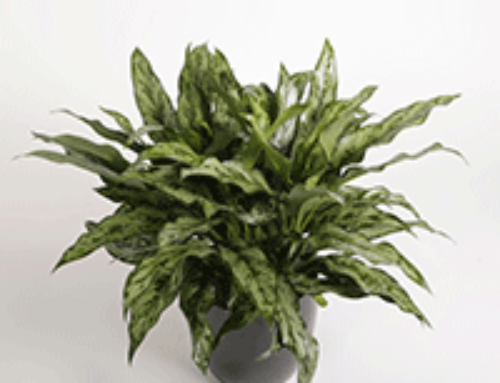Lions and tigers and BUGS, oh my! Cyclamen mites, spider mites, mealy bugs, thrips and scale, oh my! It doesn’t seem to matter how careful we are, under the stress of whatever the indoor environment holds for them, many plants become vulnerable to a case of the creepy crawlies. When outside of their native environment, tropical plants are often the first to become buggy. The first thing to do when you spot any insects in an indoor plant is to call your Plantopia Plant Technician who will assess the damage and institute a solution to the matter. Here is a quick overview of the top five most common insects that affect indoor plants. Cyclamen mites can be found on many interiorscape plants including Aeschynanthus, Aglaonema, Crassula, Dizygotheca, and Spathiphyllum to identify just a few! This tiny critter is too small to be seen by the naked eye but can be detected by the a distorted, stunted new growth on the damaged plant. You can almost assume that all or most of your Dracaenas have it. At the first sign of an infestation contact your Plantopia representative. Spider Mites are a bug that is hard to spot. The warm temperatures of summer can bring on populace explosions that ostensibly happen overnight. Spider mites are attracted to Dracaena marginata, crotons, Hedera and all palm trees. Identify if spider mites are the root of your problem is to run your fingertips along the leaves. If the undersides feel gritty, it’s these mites. Contact your Plantopia representative at the first signs of infestation. Whitish, fluffy blobs that resemble tufts of cotton indicate a mealybug infestation. Aglaonema are their main target but they will jump to just about any plant that they can reach. These pests aren’t picky and they get around. They are usually found on the undersides of leaves at the intersection of where a leaf attaches to the stem. The insects get inside the sheath so are protected from sprays making it a bit tricky to rid the plant of them. Lucky for you though, our Plantopia representatives will know how to escort them to the door. This bug is very small and easy to miss until you recognize their damage. The mature thrips are smaller than aphids, and slightly bigger than a mite. The adults are long and narrow, with black and white stripes on their backs. Thrips scrape the surface of the plant and drink up the sap. If you find whitish, silvery speckles on the leaf, call your Plantopia plantcare technician. As the population grows the larger silvery patches overtake whole leaves. Act before it’s too late. There are two major families of scale that attack interior plants: the soft scales (usually brown or black and produce honeydew) and the armored scales (often white, circular and hard with no honeydew). Furthermore, all types of scale have external shells that can make controlling their infestation a bit more difficult. The most susceptible plants are Ficus, Spathiphyllum, Rhapis, and cactus. Again, your Plantopia Interior Plant Technician can remove the critters and nurture your plants back to perfect health. Bugs are a nuisance, but never without a solution. Call Plantopia today to set up a consult to discuss some ideas. Call 800-690-7875 or email us at info@myplantopia.com, Interior Plant Insect & Pest Mitigation Today!And how to identify which bugs are eating your plants
Cyclamen Mites
Spider Mites
Mealybugs
Thrips
Scale





